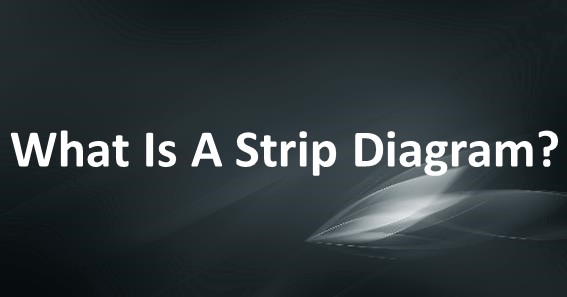Are you curious to know what is a strip diagram? You have come to the right place as I am going to tell you everything about a strip diagram in a very simple explanation. Without further discussion let’s begin to know what is a strip diagram?
In the realm of mathematics education, strip diagrams have emerged as a powerful tool for visualizing relationships and solving word problems. Strip diagrams, also known as bar models or tape diagrams, provide a pictorial representation that aids in understanding and solving mathematical problems. In this blog post, we will explore the concept of strip diagrams, their benefits, and how they can enhance problem-solving skills in mathematics.
What Is A Strip Diagram?
A strip diagram is a visual representation of a mathematical problem that uses bars or strips to represent quantities or relationships. It helps to break down complex problems into simpler components and visually depict the relationships between known and unknown quantities. Strip diagrams are particularly effective in solving word problems, as they provide a concrete and visual way to understand the problem and develop a solution strategy.
Benefits Of Strip Diagrams:
- Visual Representation:
Strip diagrams offer a visual representation that helps students visualize the problem and understand the relationships between quantities. The bars or strips provide a concrete representation of the information, making it easier to interpret and analyze the problem at hand.
- Problem Decomposition:
Complex word problems can be overwhelming for students. Strip diagrams help break down the problem into smaller, manageable parts by separating the information into distinct bars or strips. This decomposition facilitates a step-by-step approach to problem-solving, allowing students to focus on one component at a time.
- Relationship Identification:
Strip diagrams highlight the relationships between known and unknown quantities. By visually representing these relationships, students can identify patterns, make connections, and better understand the problem’s underlying structure. This understanding is crucial for developing effective problem-solving strategies.
- Strategy Development:
Strip diagrams prompt students to think critically about how different quantities relate to one another. By visually representing the problem, students can devise effective solution strategies, such as using addition, subtraction, multiplication, or division, to determine the unknown quantities.
Implementing Strip Diagrams:
- Problem Analysis:
Read and analyze the word problem carefully, identifying the known and unknown quantities, as well as any relationships or operations involved.
- Strip Diagram Construction:
Create a strip diagram by drawing bars or strips to represent the known quantities, using appropriate labels or units of measurement. Position the bars relative to one another to reflect their relationships.
- Relationship Interpretation:
Analyze the strip diagram and interpret the relationships between the known and unknown quantities. Determine the appropriate operation or strategy needed to solve the problem.
- Solution Development:
Use the strip diagram as a guide to develop a solution strategy. Apply the appropriate mathematical operations or reasoning to determine the value of the unknown quantities.
- Solution Verification:
After obtaining a solution, verify the answer by checking if it aligns with the original problem and makes logical sense in the given context.
Conclusion:
Strip diagrams are a valuable tool for students to visualize and solve mathematical word problems effectively. By representing the relationships between known and unknown quantities, strip diagrams enhance problem-solving skills, promote critical thinking, and provide a concrete understanding of mathematical concepts. Implementing strip diagrams in the classroom empowers students to approach word problems with confidence, fostering a deeper comprehension of mathematical relationships and improving overall problem-solving abilities. Embrace the power of strip diagrams and unlock the potential for visualizing, analyzing, and solving mathematical problems.
You can search for more information on Snorable
FAQ
What Is The Meaning Of Strip Diagram?
A strip diagram is essentially a rectangular bar or box that can be divided up in different ways to represent known and unknown quantities. The overall idea is that with a drawing or picture students can better visualize a problem and then decide what operation they should use to get the answer.
What Is An Example Of A Diagram?
A diagram is a visual representation of systems, structures, and relationships between things. Some diagram types are referred to as “map” or “chart” or “graph” but fall under the diagram category. For example, mind maps, flowcharts and organizational charts.
What Is A Tape Diagram In 5th Grade Math?
Tape diagrams are also called “bar models” and consist of a simple bar drawing that students make and adjust to fit a word problem. They then use the drawing to discuss and solve the problem. As students move through the grades, tape diagrams provide an essential bridge to algebra.
What Is The Simple Meaning Of Strip?
/ (strɪp) / verbstrips, stripping or stripped. to take or pull (the covering, clothes, etc) off (oneself, another person, or thing): to strip a wall; to strip a bed. (intr) to remove all one’s clothes.
I Have Covered All The Following Queries And Topics In The Above Article
What Is A Strip Diagram In Math
What Is A Strip Diagram In 4th Grade Math
What Is A Strip Diagram For Multiplication
What Is A Strip Diagram 3rd Grade
What Is A Strip Diagram In 3rd Grade Math
What Is A Strip Diagram For 22 And 38 With A Missing
Math What Is A Strip Diagram
What Is An Illustration Of Nine Fifths In A Strip Diagram
What Is A Strip Diagram For Division
What Is A Strip Diagram For 22 And 38 With A Missing Number
Google What Is A Strip Diagram
What Is A Strip Diagram In Math 3rd Grade
What Is A Strip Diagram
How do you use a strip diagram
What is the meaning of strip diagram






